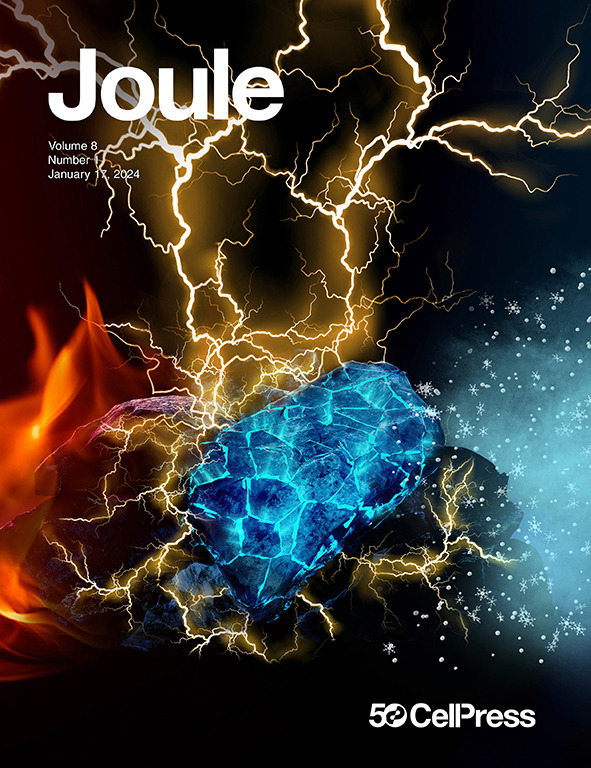Reducing the MAPbI3 microstrain by fast crystallization
IF 35.4
1区 材料科学
Q1 CHEMISTRY, PHYSICAL
引用次数: 0
Abstract
Control over perovskite crystal growth, resulting in thin film morphology, has been at the very foundation of the evolution of perovskite photovoltaics (PVs). Methylammonium lead triiodide (MAPbI3) perovskite has been the workhorse material for this class of semiconductors, offering good efficiency with a relatively simple composition, which attracts industrial scale production. Despite that, instability has hampered their further exploitation. In this work, we explored the effect of different types and timing of the antisolvents on MAPbI3 perovskite crystallization. This approach enabled control of the crystalline microstrain while reducing unwanted trap density. This effect impacted device performances, enabling the achievement of MAPbI3 solar cell with power conversion efficiency (PCE) approaching 22%. Importantly, we demonstrated that an efficient MAPbI3 perovskite solar cell is also a stable one. Our solar cells showed an efficiency loss of only 10% after 900 h at 85°C, putting MA-based PSCs back among promising PV technologies.


快速结晶法降低MAPbI3微应变
对钙钛矿晶体生长的控制,导致薄膜形态的形成,一直是钙钛矿光伏(pv)发展的基础。三碘化铅甲基铵(MAPbI3)钙钛矿一直是这类半导体的主要材料,它以相对简单的成分提供了良好的效率,吸引了工业规模生产。尽管如此,不稳定阻碍了它们的进一步开发。在这项工作中,我们探讨了不同类型和时间的反溶剂对MAPbI3钙钛矿结晶的影响。这种方法可以控制晶体微应变,同时减少不必要的陷阱密度。这一效应影响了器件性能,使MAPbI3太阳能电池的功率转换效率(PCE)接近22%。重要的是,我们证明了高效的MAPbI3钙钛矿太阳能电池也是稳定的。我们的太阳能电池在85°C下900小时的效率损失仅为10%,使基于ma的PSCs重新成为有前途的光伏技术之一。
本文章由计算机程序翻译,如有差异,请以英文原文为准。
求助全文
约1分钟内获得全文
求助全文
来源期刊

Joule
Energy-General Energy
CiteScore
53.10
自引率
2.00%
发文量
198
期刊介绍:
Joule is a sister journal to Cell that focuses on research, analysis, and ideas related to sustainable energy. It aims to address the global challenge of the need for more sustainable energy solutions. Joule is a forward-looking journal that bridges disciplines and scales of energy research. It connects researchers and analysts working on scientific, technical, economic, policy, and social challenges related to sustainable energy. The journal covers a wide range of energy research, from fundamental laboratory studies on energy conversion and storage to global-level analysis. Joule aims to highlight and amplify the implications, challenges, and opportunities of novel energy research for different groups in the field.
 求助内容:
求助内容: 应助结果提醒方式:
应助结果提醒方式:


